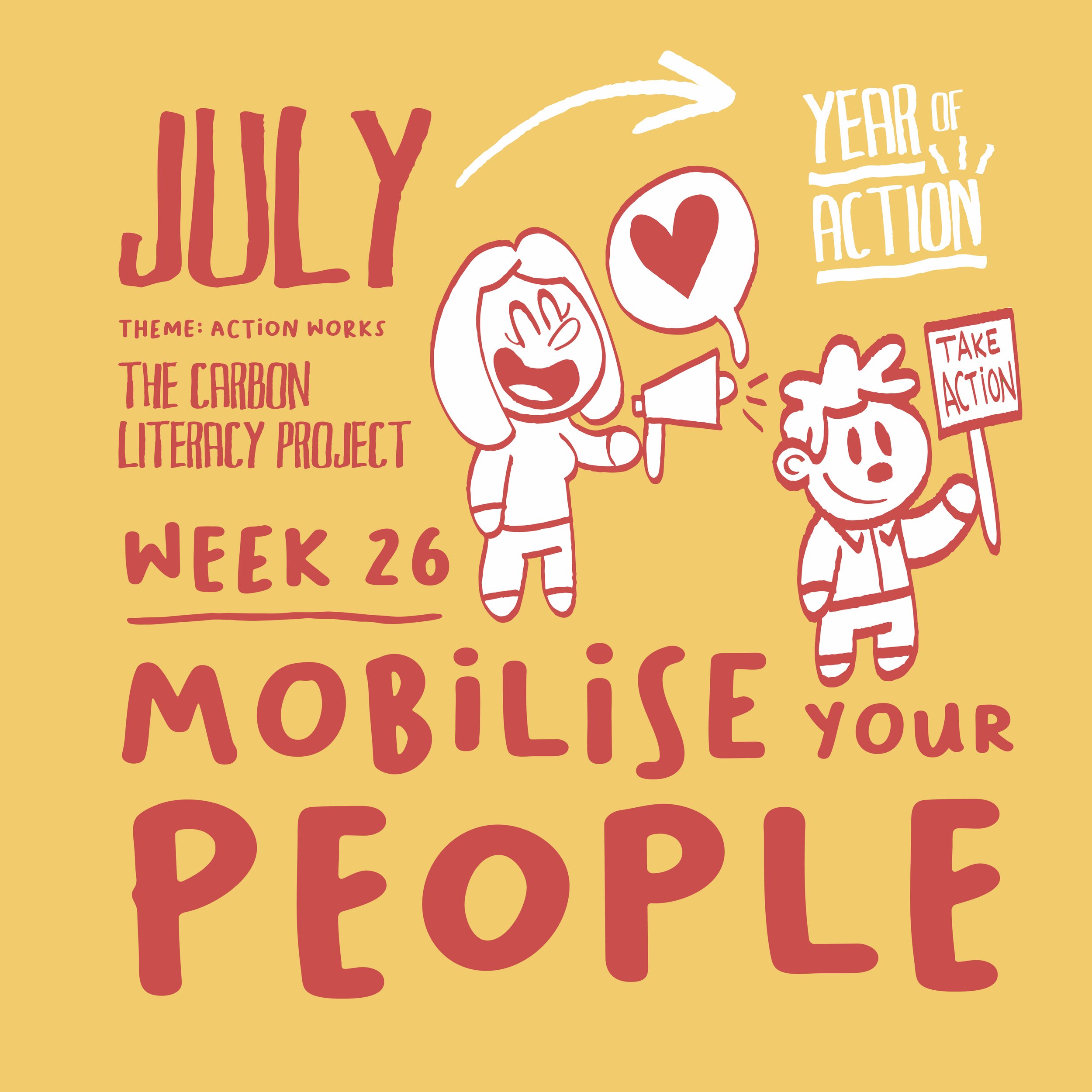Week 26: Mobilise your people
Introduction to this weeks partner:
The Carbon Literacy Project offers everyone a day’s worth of Carbon Literacy® learning, covering – climate change, carbon footprints, how you can do your bit, and why it’s relevant to you and your audience.
The Carbon Literacy Project is globally unique – there is nothing else quite like it anywhere. It was recognised as such by the UN at COP21, in Paris, where it was awarded as a TAP100, one of 100 worldwide Transformative Action Programs.
Carbon Literacy (CL) is aimed at three distinct audiences – Those that live, Those that work, and Those that study. This allows us to capture all audiences in our aim to offer every citizen Carbon Literacy learning. The aim is to enable everyone to not just discover their best climate action but be motivated to actually do it.
Take Action:
We believe that the key to solving any problem, no matter how big, is taking action - doing what you can, with what you have.
Big challenges aren’t solved in one sweeping motion. They are solved by firstly deciding you want to meet the challenge and understanding the challenge, then taking steps towards solving it. There are steps everyone can take that actually make a difference, and they should be celebrated. Can this step be replicated? Can you empower all of your people to take small steps too?
One of our first trainees was a security guard at a High Street clothes store. He revealed that the long plastic tubes the clothes arrived in were binned. He knew that was wrong and his action (all CL learners devise actions) was to save the tubes, cut them into metre chunks, tape the end of each chunk and – hey presto - he had homemade bin bags! Greenhouse gases saved? Minimal. Shopfloor conversations started? Massive, with loads of colleagues inspired to step up to do their bit. This is about culture shift as much as direct greenhouse gas reduction.
This week, we’re challenging you to take a step. What creative solution do you have to take action towards solving a problem, no matter how big it is? Can you mobilise others to think in this way too?
If you haven’t already, we’d also invite you to take a look at our website carbonliteracy.com. The website has a tonne of case studies and toolkits to support you taking action and if you haven’t already, you’ll find details of how to enable your people to access Carbon Literacy learning.


